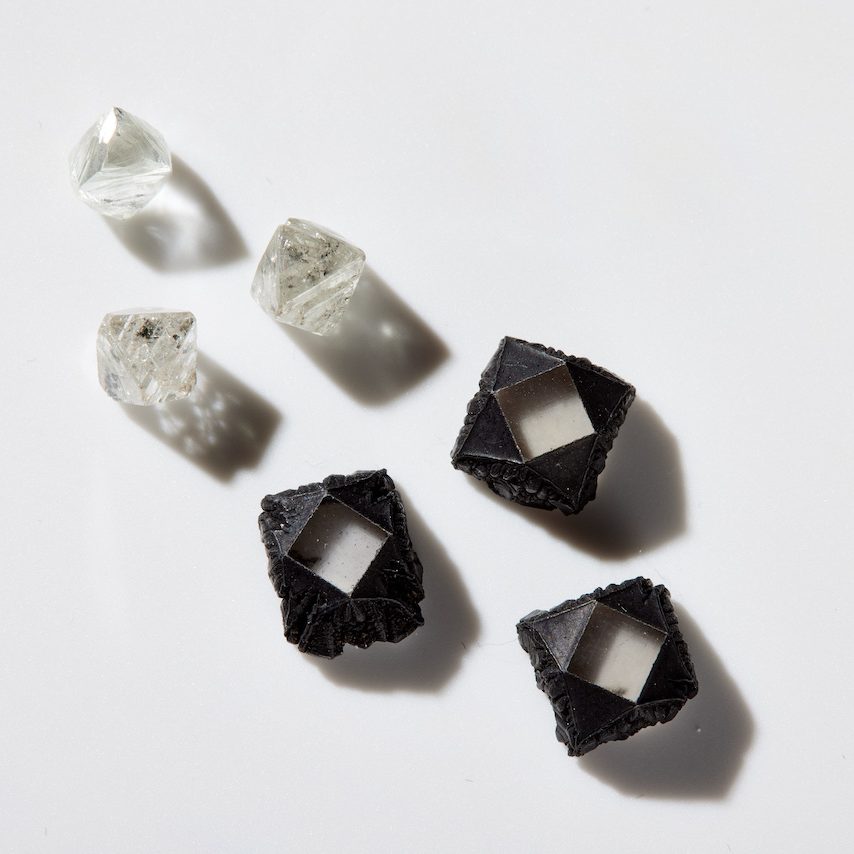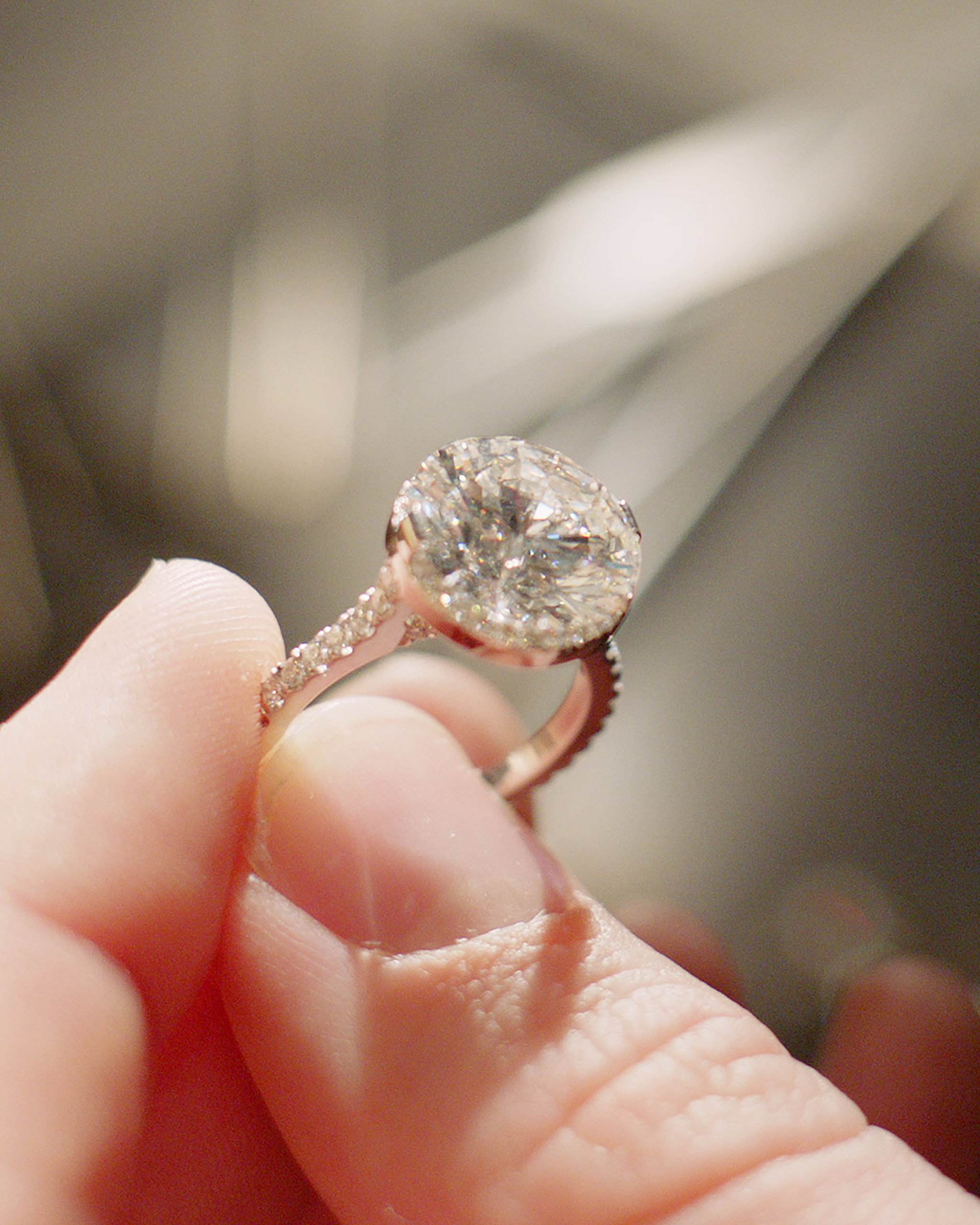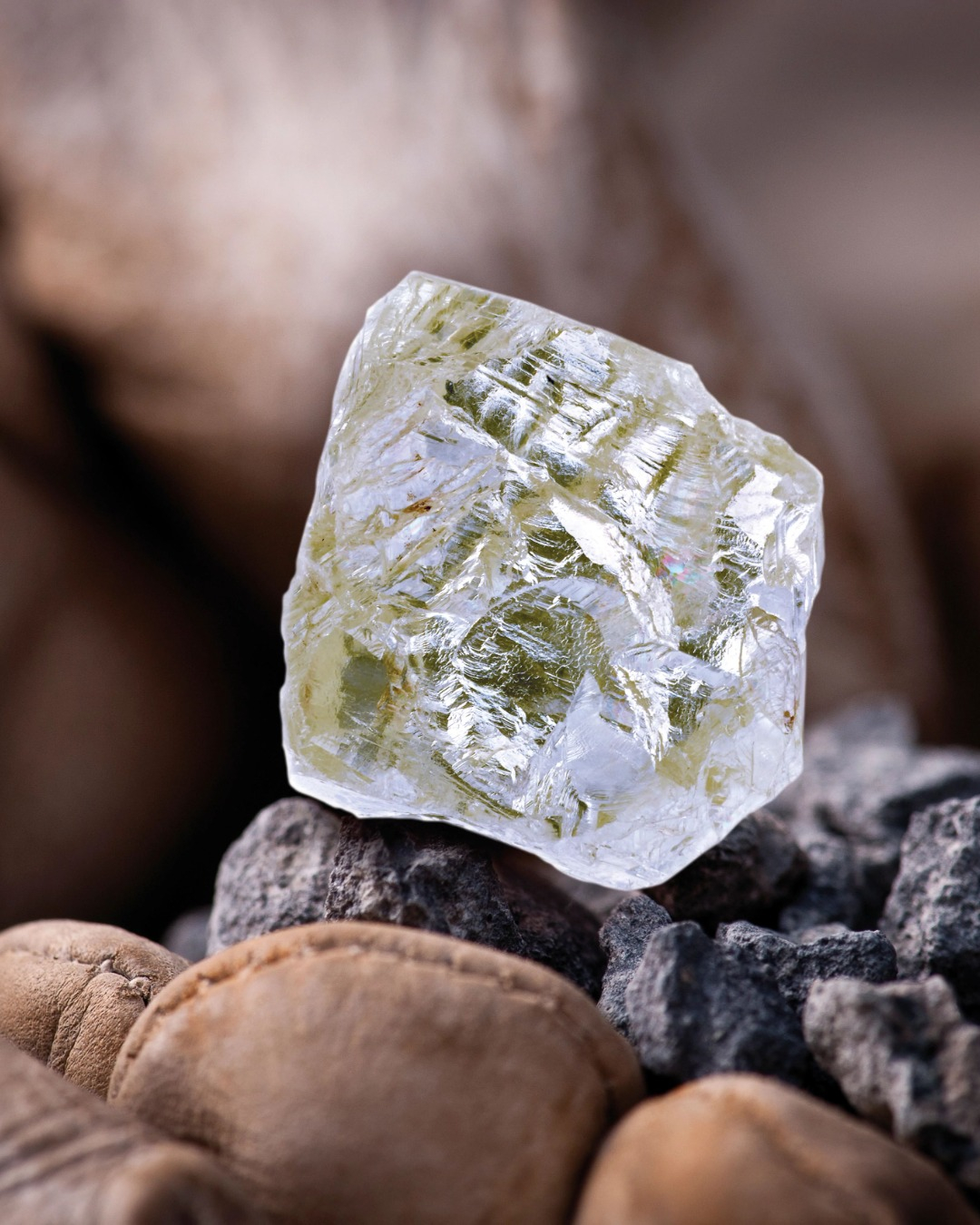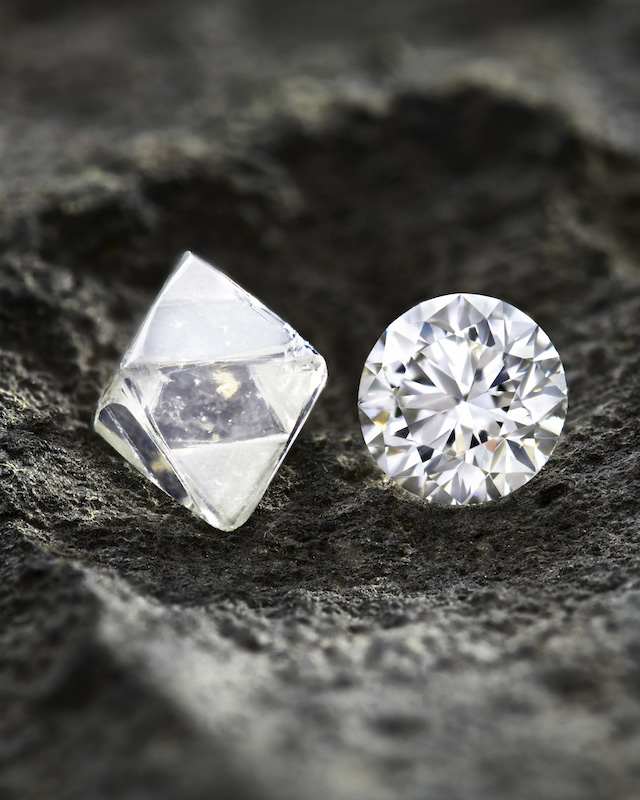May 22, 2025
Written by: Editorial Staff
At first glance, diamond simulants like cubic zirconia and moissanite may appear similar to natural diamonds, but their composition tells a different story. Unlike diamonds, which form from crystallized carbon deep within the Earth over billions of years, simulants are made from entirely different materials, such as zirconium dioxide or silicon carbide, in factory settings. These distinctions impact everything from durability and brilliance to how they interact with light—details that trained experts and modern diamond testers can easily detect.
Below, discover the difference between natural diamonds, laboratory grown diamonds (also known as lab grown diamonds), and diamond simulants like cubic zirconia—and understand how to tell if your diamond is a real product of nature.
The Difference Between Diamonds and Diamond Simulants
A diamond simulant may sparkle, but it’s not the real thing. Designed to mimic the appearance of a natural diamond, simulants lack the unique composition and enduring rarity that make natural diamonds so extraordinary. While they may look similar at a glance, trained experts and diamond testers can easily tell them apart. Lab grown diamonds, while laboratory-created like simulants, are made of crystallized carbon and share similar physical and optical properties as natural diamonds, making them harder to distinguish.
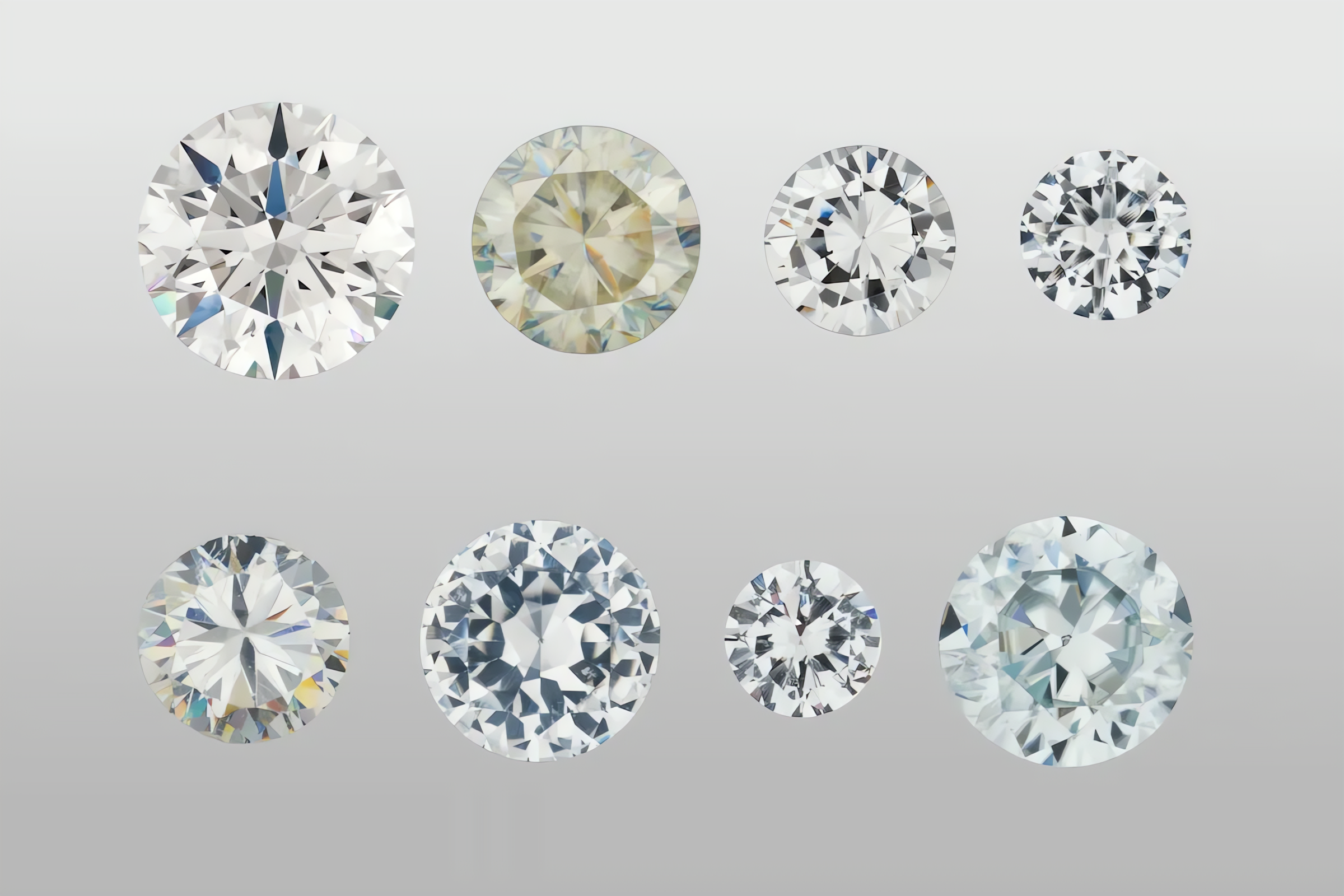
Lab Grown Diamonds
While they look like natural diamonds, lab grown diamonds (synthetic diamonds) are made from crystallized carbon atoms, not a simulant, and hold a different value. Lab grown diamonds are created through two primary methods, both using a diamond seed to start the process: High Pressure High Temperature (HPHT), which mimics the natural conditions of the Earth’s mantle, and Chemical Vapor Deposition (CVD), where a carbon-rich gas is used to grow diamond crystals layer by layer. Lab grown diamonds can be difficult to distinguish from natural diamonds without expert analysis or specialized testing tools since they have similar properties as natural diamonds.
Diamond Simulants
Diamond simulants are man-made or natural stones that mimic the appearance of diamonds but lack crystallized carbon. While materials like glass and quartz have been used for centuries to replicate diamond’s sparkle, modern simulants such as cubic zirconia and moissanite differ in composition, brilliance, hardness, and density. Unlike real diamonds, simulants are generally easier to identify using basic gemological tools, and they don’t offer the same durability or long-term value. Though they may sparkle at first glance, their performance and rarity fall short of what makes natural diamonds truly exceptional.
How to Verify Your Purchase
As lab-grown diamonds’ prices have significantly dropped (70-80% in recent years) due to advancements in technology, understanding the differences between real gems created deep within the Earth—natural diamonds—and manufactured stones such as lab grown diamonds, and simulants, is essential for making informed purchases. They may look similar but have very different values. Learn more below about how to determine if your diamond is a real product of nature.
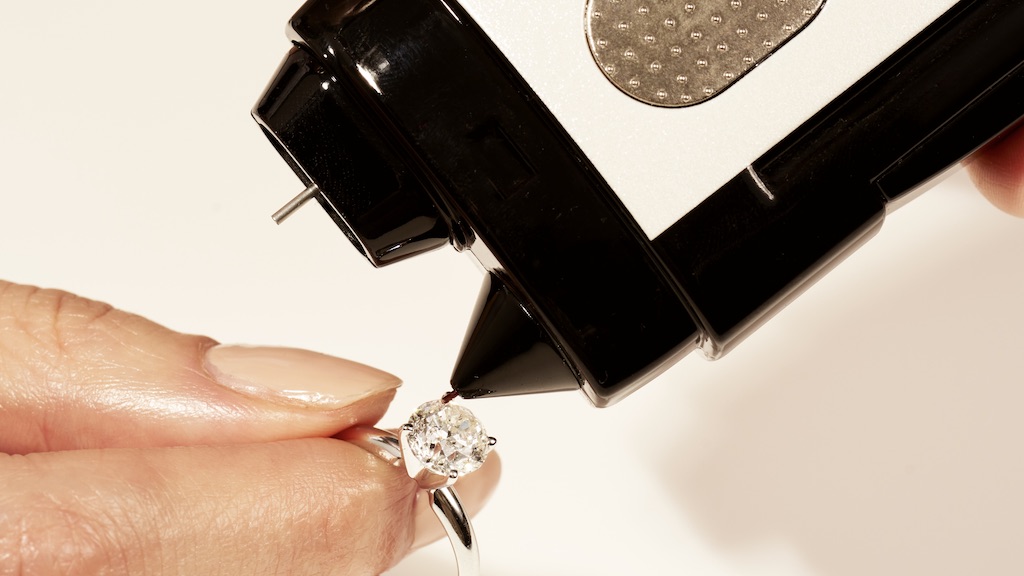
Because they are mass-produced in a matter of weeks, lab grown diamonds have distinct telltale growth patterns that are easily detected using diamond verification instruments. Experts can spot the difference using these instruments.
An imitation diamond, also named a diamond simulant, is an artificial product that imitates the appearance of diamonds without having their chemical composition, physical properties or structure. They can be recognized with the naked eye.
Your jeweler should have a diamond verification instrument. Make sure they have the stones checked for you before you make a purchase.
Common Types of Diamond Simulants
Cubic Zirconia
One of the most common diamond simulants is cubic zirconia (CZ), which is a synthetic material made of zirconium dioxide. Cubic zirconia was first mass-produced in the 1970s as a more affordable alternative to diamond engagement rings and diamond jewelry. Cubic zirconia has a hardness of 8 on the Mohs scale, which is less than the hardness rating of a diamond, which is 10. Cubic zirconia has a high refractive index, meaning it reflects light in a way similar to a diamond, giving it a sparkle that few simulants had before it. Regardless, any expert can tell the difference between a Cubic Zirconia and a natural diamond.
Moissanite
Another common diamond simulant is synthetic moissanite. While moissanite is a naturally occurring silicon carbide, the man-made copy is what is usually used as a diamond simulant. Moissanite has a hardness of 9.25 on the Mohs scale, so it is more durable than most diamond simulants. However, moissanite is also “doubly refractive,” which means it reflects light differently than a natural diamond, making it easy to distinguish with the naked eye.
White Sapphire
Lab grown white sapphire is another relatively common diamond simulant. White sapphire can also be a naturally occurring gemstone; its man-made copy is more common as a diamond simulant. Like other man-made replicas, its natural version is far more valuable. White sapphire is made of aluminum oxide and has a hardness of 9 on the Mohs scale, which makes it one of the hardest materials after an actual diamond. White sapphire reflects less light than a diamond and often has a more ‘milky’ appearance, making them easily distinguishable with the naked eye.
Other Simulants
Other less common diamond simulants include lab grown spinel, glass, YAG (yttrium aluminum garnet), and GGG (gadolinium gallium garnet). All of these simulants are also lab grown or man-made and fail to match a natural diamond’s hardness level of 10 on the Mohs scale of hardness, meaning they are less durable. They also have different visual properties that make them easily distinguishable from natural diamonds.
Quartz, Zircon, and Topaz
Diamond simulants can also be found in nature. These natural gemstone simulants also mimic the visual properties of a diamond and include quartz, zircon, and topaz. Although natural, their relative abundance to natural diamonds means they are still far less valuable. They also fall behind diamonds in terms of hardness, with quartz a 7 on the Mohs scale, zircon a of 7.5, and topaz with a hardness of 8. Like man-made simulants, their visual properties are dissimilar enough from diamonds to make them easily distinguishable.
About Natural Diamond Council
Natural Diamond Council (NDC) is the global authority on natural diamonds. As a not-for-profit organization, NDC is committed to advancing the integrity of the natural diamond industry and celebrating the unmatched beauty and value of natural diamond jewelry. NDC serves as the industry’s definitive voice, offering expert insight, trusted education, and unparalleled access to the world of real, rare, and responsibly sourced natural diamonds.
